REVIEW: Teaira Whitehead: An intersection of Art, Activism, and Urban Realities
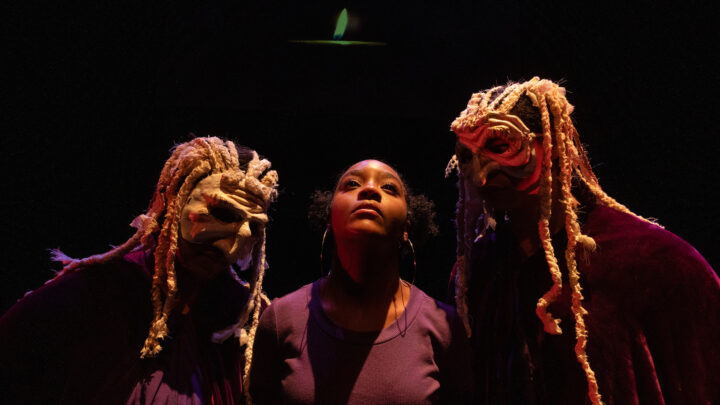
REVIEW: TEAIRA WHITEHEAD: AN INTERSECTION OF ART, ACTIVISM, AND URBAN REALITIES
by Vanessa Reseland
Photos by Renee Rosensteel
Continuing a sponsored partnership with the New Hazlett Theater, we are presenting a series of editorially-independent previews and reviews of the 2023–24 Community Supported Art (CSA) Performance Series. Below is our review of Teaira Whitehead by Melannie Taylor, a collaborative response from Vanessa Reseland with guest panelists David Bernabo, Amy Wang, and Eric Graf.
Melannie Taylor’s thought-provoking play, Teaira Whitehead, premiered in The New Hazlett Theater’s Community Supported Art series on February 15th and 16th. Inspired by the tragic true story of 16-year-old Teaira Whitehead’s suspicious death on the North Side of Pittsburgh, the production blends art and activism, immersing the audience in a compelling narrative that navigates the urban experience for black teens. The piece sheds light on the overlooked issue of missing black children and the resilient communities uniting to fight for their safety.
Sunny, Rose, and Diamond are close friends, navigating the challenges of their education as their school closes amid mergers. The trio, residing on the North Side of Pittsburgh, repeatedly encounters a menacing figure known as The Hustler. His continual harassment fuels their commitment to protect each other from potential violence in their community. As they grapple with the impending closure of their school, Diamond goes missing, driving Sunny and Rose into the woods in search of answers and safety. While there, the mysterious death of Teaira Whitehead hits close to home as Teaira’s spirit becomes a central figure in their journey.
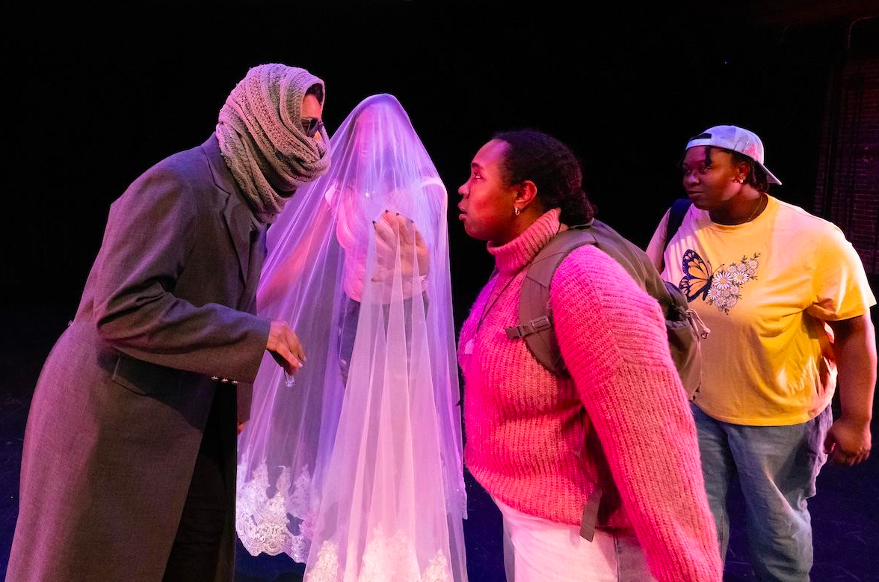
A notable success of Teaira Whitehead is its attention to costume choices, effectively capturing the nuances of modern teenage life in the city. Designed by Jeremy Pitzer, each characters’ attire serves as a visual language, allowing the audience to identify and connect with each persona on a personal level. Rose’s crystal-adorning, earthy style, juxtaposed with Sunny’s hip-hop-inspired ensemble, contribute to the depth and relatability of the characters. The Hustler, played with a perfect level of domineering intimidation by Tyler Ray Kendrick, is cloaked head to toe. A scarf wrapped around his mouth and sunglasses covering his eyes, he utilizes mask work to expertly create a recognizable and unsettling character out of movement and vocal technique alone. The
Masc and Femme Walls, played by Lee Richardson and Win Nunley respectively, wore evocative masks under hoods as they stood connected to Sunny and Rose, giving voice to their inner monologues and anxieties. This visual authenticity not only enhances the overall immersiveness of the play but also underscores the importance of representation in storytelling.
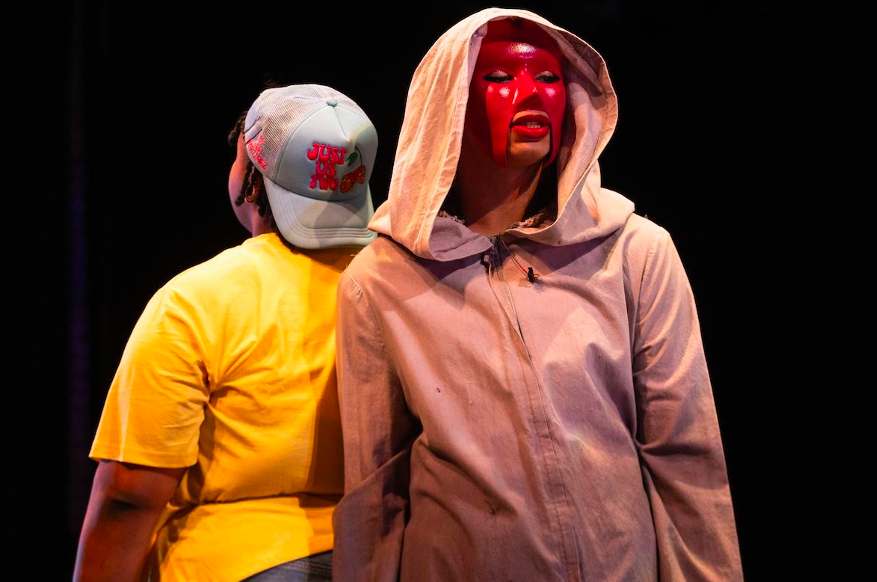
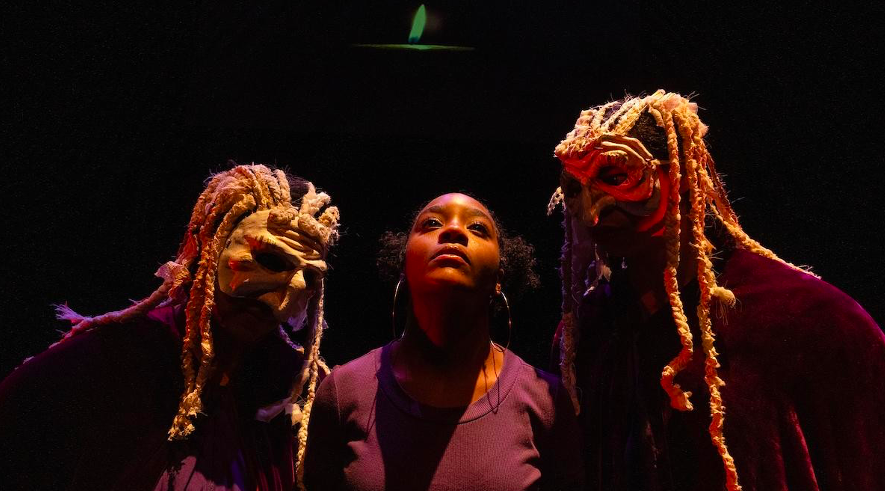
The production finds some success in its minimal but visually captivating set design. Gorgeous Afro-Trees (trees made of hair) symbolize the woods, taking center stage. These towering, ominous trees rise to the rafters to evoke a powerful historical context, reminiscent of the black lives lost to lynchings in American trees. The set’s transformation into an eerie, fantastical world is a testament to the creative prowess of Melannie Taylor’s set design/props, Pitzer’s costumes, and Rianne Lindsey’s lighting design. The Afro-Trees, somewhat reminiscent of a Jim Henson creation, serve as silent witnesses to the unfolding story, embodying both beauty and anguish. The set also includes projections by Aaron Henderson, providing the setting for each scene. While inexpensive and effective, the images at times left something to be desired and slightly detracted from the mood of the scene. Perhaps with a more robust budget, the tangible, textural effect of the Afro-Trees could be more plentiful. There is a hint of something extraordinary in this world, but it leaves us wanting more.
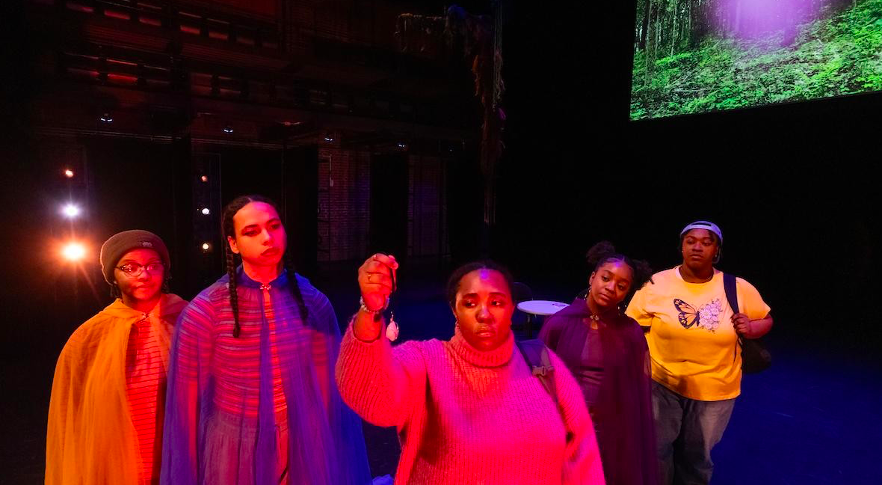
Sound is also a life-force in this show. With music and sound designs by Frames, we jump between The Hustler’s slick theme music, the introduction of Teaira’s voice, modulated to become a fearsome, otherworldly cry amid terrorizing police sirens, and original music sung by the possible ghosts of Diamond and her two new forest friends. The song, with light-hearted choreography by Rikia Davenport, brought softness and joy back to these young characters who had become anxious and defensive.
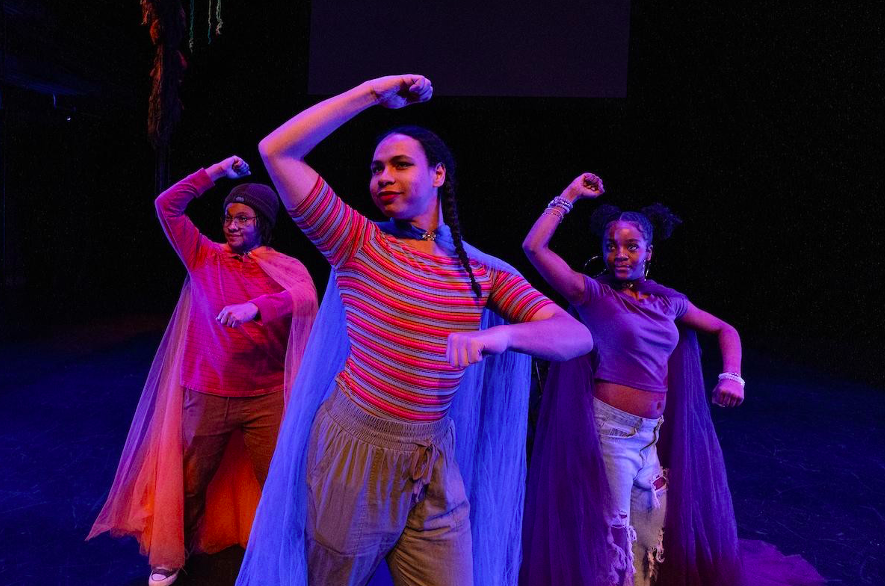
Teaira Whitehead is driven by snappy, clever, and realistic dialogue that effectively defines the characters and delves into their motivations. The plot artfully navigates between slice-of-life and more mystical elements, maintaining the audience’s engagement throughout the performance. The inclusion of a mystery within the mystery, revolving around Diamond’s disappearance, adds layers of intrigue. This narrative choice mirrors the chaos of real-world events and emphasizes the unacknowledged cries for answers in society. The characters, with their relatable banter and genuine interactions, serve as conduits for the audience to navigate the complexities of their urban landscape.
The success of Teaira Whitehead extends beyond its artistic merits as it courageously tackles crucial social and racial justice issues. Specifically, the play delves into the aggressive treatment of black children within the Pittsburgh educational system. By shedding light on the resilience of communities and emphasizing the inherent magic within them, the production becomes a rally cry for change. It serves as a potent reminder of the need for societal transformation and amplifies the voices that are often unheard. The play, in essence, transcends the boundaries of traditional storytelling, evolving into a platform for advocacy and awareness.
Under the deliberate and thoughtful direction of Kim El, the play tackles youthful disillusionment, gritty realism, and the meta-physical rather seamlessly. In less adept hands, the transitions could be confusing or jarring, but this production felt engaging and cohesive.
While the play is largely successful, there is room for revision. Teaira Whitehead‘s savvy balance of activism, plot, and mystery becomes evident in later scenes, but the opening sequence felt laden with heavy-handed exposition. Our introduction to the three friends occurs as they watch the news about Teaira Whitehead’s found body. The dialogue lays out the circumstances very clearly but not as elegantly as in later scenes. A more refined approach, matching its later sophistication, could enhance the overall cohesiveness of the production and provide a smoother introduction to the narrative.

Moments of confusion and fear in the woods, while already provocative, could be intensified to evoke a stronger emotional response. Pushing the horror elements farther could elevate the play to a level that resembles thought-provoking films like Jordan Peele’s Get Out. By doing so, the production could create a more profound impact on the audience, enhancing the thematic resonance and emotional journey. The moments of terror, if intensified, may serve as a visceral reflection of the real-world horrors faced by the black community in America at large.
The performances by Cayah Leavy as Rose, Charlese Dawson as Sunny, Ameriah Fisher as Diamond, ensemble members, Lee Richardson and Win Nunley, and Mokah Malandro as Teaira Whitehead all had moments of beauty and truth on stage. However, as with the minimal scenery and the hints of horror, the performances could have gone further as well. The choices each actor made were smart, engaging, honest, and in service of the plot, but the execution of action and passion often fell just short of their potential. Pushing themselves even further out of their comfort zones could have forced the audience even further into the necessary angst of this story. Discomfort is a necessary tool to inspire change.
The play deliberately introduces ambiguity regarding Teaira’s fate, implying a potential abduction and murder by a Hustler-type figure. While this ambiguity adds a layer of mystery, a bit more clarity could enhance the audience’s understanding. Whether an abduction was based on undisclosed information or made by Taylor as an artistic choice, providing additional context could strengthen the narrative.
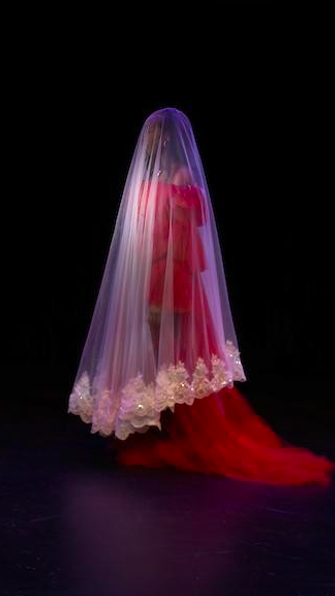
As the play continues to evolve, Melannie Taylor’s work actively engages the audience in the pursuit of justice, emerging as a poignant piece of activism and art. Teaira Whitehead is not merely a performance; it is an invitation to reflect, question, and empathize. In navigating the complexities of Pittsburgh’s urban life and systemic injustice, Taylor’s play stands as a testament to the power of art in inspiring societal change. Despite areas for refinement, its importance cannot be overstated. The production serves as a call to action, urging the audience to actively participate in the ongoing demand for justice and equality. Melannie Taylor’s Teaira Whitehead resonates with the echoes of those who demand to be heard and remembered.
Review Panelists include:
Vanessa Reseland (they/them) is an actor/singer/songwriter who has performed all over the US and in the UK. After growing up in the North Hills, Vanessa spent 12 years in New York City and three years in Los Angeles, working in musical theatre, film, and television before returning to Pittsburgh to dive into the local arts scene as well. They played the Witch in Fiasco Theater’s Into the Woods in London and on the US National Tour, winning the Helen Hayes Award for Outstanding Visiting Production and the LA Critic’s Circle Award for Best Ensemble Cast. Vanessa is a founding member of MOD Theatre Company in NYC/LA and co-created and co-directed the webseries, Remarkable Women, with Alexandra Lenihan. They have performed their original glam rock/artpop project, WIFEY, since 2012 https://www.thisiswifeymusic.com/.
David Bernabo is an oral historian, musician, artist, and independent filmmaker. His film work has documented western Pennsylvania food systems, climate change, the studio practices of composers and artists, and the histories of iconic arts institutions like the Mattress Factory. He is most noted for Moundsville, a documentary co-directed with former Wall Street Journal writer John W. Miller, which screened on PBS for three years, and the biographical documentary Just For The Record about avant-garde composer “Blue” Gene Tyranny.
Amy Wang
Eric Graf
